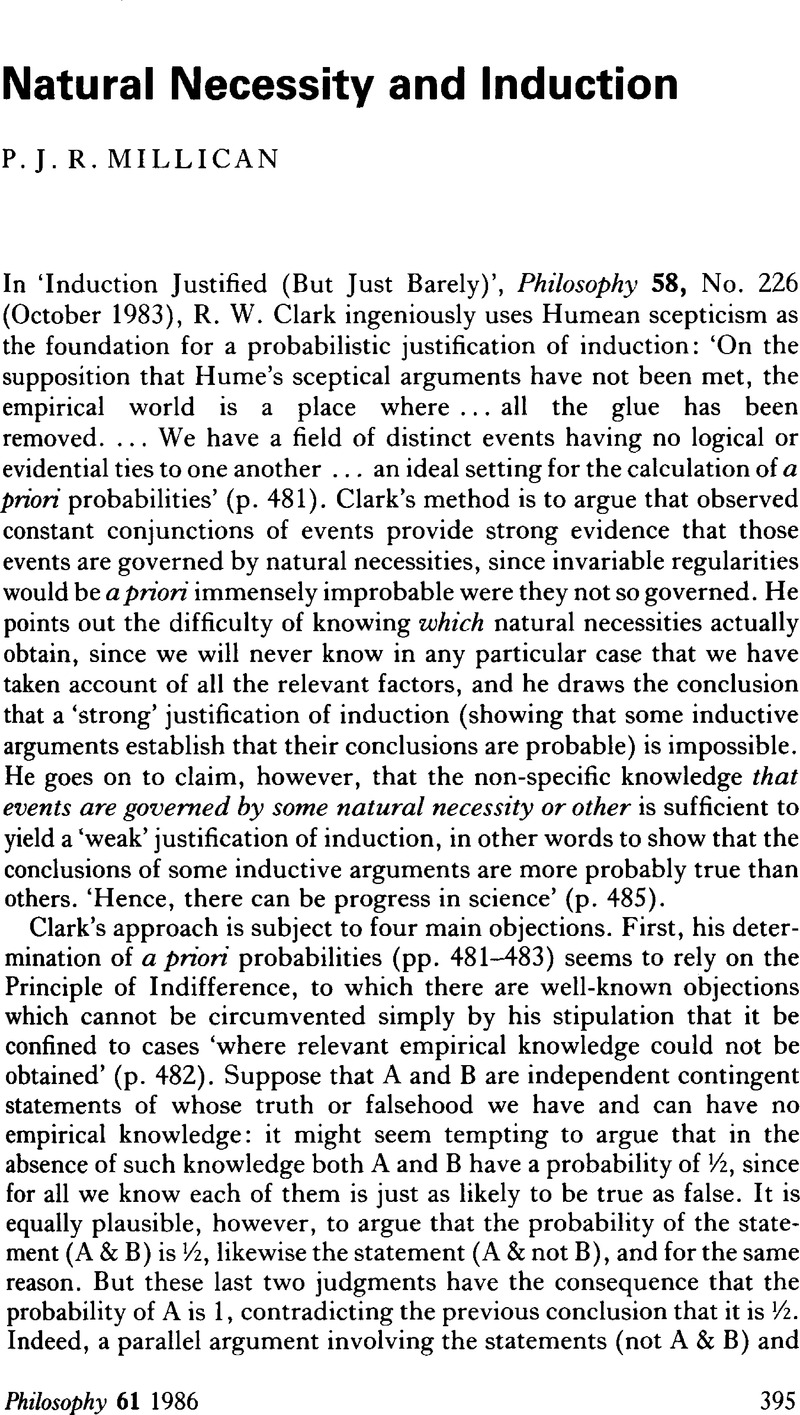No CrossRef data available.
Article contents
Natural Necessity and Induction
Published online by Cambridge University Press: 30 January 2009
Abstract

- Type
- Discussion
- Information
- Copyright
- Copyright © The Royal Institute of Philosophy 1986
References
1 As we shall see later, this appearance is deceptive.
2 Enquiry Concerning Human Understanding, 3rd edn, Selby-Bigge (ed.) (Oxford University Press, 1975), 37–38 (section 32). Hume presents the same argument, though less elegantly, in his Treatise of Human Nature, 2nd edn, Selby-Bigge (ed.) (Oxford University Press, 1978), 90–91.
3 ‘A Defence of Induction’, in Perception and Identity, Macdonald, G. F. (ed.) (London and Basingstoke: Macmillan, 1979).CrossRefGoogle Scholar
4 ‘Mackie's Defence of Induction’, Analysts 42.1 (January 1982).
5 Hume himself argues that the idea of necessity is incoherent as ascribed to external objects, since it is an idea derived from an internal impression (Treatise, pp. 160–166). The argument of the text, however, in no way depends on his theory of ideas, and thus gives him a more reliable route to the same destination.
6 This argument conjures up the picture of somebody trying to fix a steel plaque to a brick wall using magnets: no matter how many he attaches to the plaque, he cannot in any way attract it to the wall. Similarly, if there is a logical gap between A and B, and if the power to produce B implies that B follows, then there will be exactly the same logical gap between A and that power.




